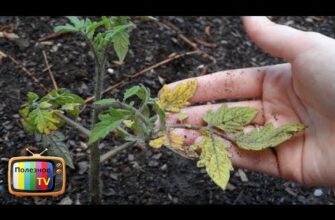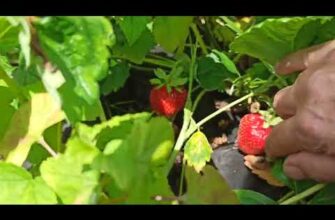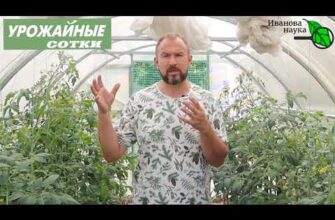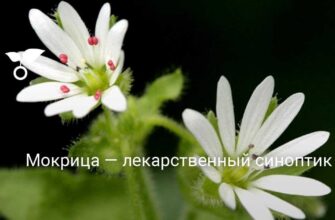- Лучшие сорта томатов сезона: подробный обзор 14 лидеров!
- 1. Сорт томата №1
- 2. Сорт томата №2
- 3. Сорт томата №3
- 4. Сорт томата №4
- Красный гигант: огромные плоды и богатый вкус
- Голден сансет: идеальное сочетание сладости и кислинки
- Черное солнце: уникальный цвет и насыщенный аромат
- Абракадабра: множество мелких плодов на одной кисти
- Китайская роза: экзотический вид и нежная текстура
- Золотой дождь: яркий и сочный, привлекает взгляды
- Розовое чудо: нежные оттенки и неповторимый вкус
- Черный принц: элегантная черная кожица и сладкий мякоть
- Радуга вкусов: разнообразие цветов и оттенков вкуса
- Зеленый гигант: освежающий и ароматный, идеально в салатах
- Малиновое чудо: насыщенный вкус и великолепный аромат
- Оранжевая сказка: необычный цвет и сладкий вкус
- Вопрос-ответ:
- Как выбрать лучший сорт томата для выращивания?
- Какие сорта томатов самые урожайные?
- Какие сорта томатов лучше всего подходят для консервирования?
- Какие сорта томатов лучше всего подходят для выращивания в теплице?
- Какие сорта томатов самые вкусные?
- Видео:
- ЭТО НАДО ВИДЕТЬ! ЛУЧШИЕ ТОМАТЫ 2022 ГОДА САМЫЕ РАННИЕ

Томаты — одна из самых популярных овощных культур среди садоводов и огородников. В сезон свежих и сочных помидоров каждый стремится вырастить именно лучшие сорта. В данном обзоре мы рассмотрим 14 лидеров среди сортов томатов, которые пользуются наибольшей популярностью в этом сезоне.
Перед вами подробный обзор каждого сорта томата, в котором будут указаны его особенности, преимущества и недостатки. Вы сможете выбрать идеальный сорт для своего сада или огорода, и наслаждаться вкусными и сочными помидорами на протяжении всего сезона.
Независимо от того, являетесь ли вы опытным садоводом или только начинаете знакомиться с выращиванием томатов, вам будет интересно узнать о самых популярных и успешных сортах. Некоторые из них отличаются высокой урожайностью, другие — неповторимым вкусом, а третьи — прекрасным внешним видом. Вместе мы рассмотрим все и выберем лучший сорт томата для вас!
Лучшие сорта томатов сезона: подробный обзор 14 лидеров!

Сезон томатов – это всегда радость для любителей свежих и сочных овощей. Каждый год на рынке появляется множество новых сортов, но среди них всегда есть настоящие лидеры.
Сегодня мы хотим представить вам обзор 14 самых лучших сортов томатов сезона. Каждый из этих сортов отличается особыми качествами и имеет свою неповторимую вкусовую характеристику.
1. Сорт томата №1

Этот сорт отличается крупными плодами, сочной мякотью и приятным сладким вкусом. Идеально подходит для приготовления салатов и блюд из свежих овощей.
2. Сорт томата №2
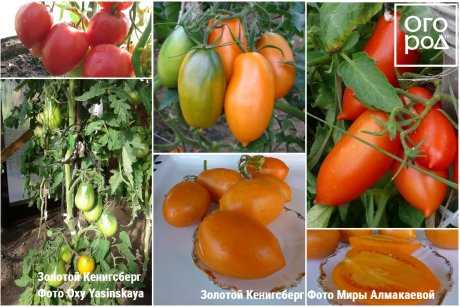
Этот сорт отличается высокой урожайностью и хорошей устойчивостью к болезням. Плоды имеют ярко-красный цвет и сочную мякоть с приятным кисло-сладким вкусом.
3. Сорт томата №3

Этот сорт отличается компактной формой куста, что позволяет выращивать его даже на небольших участках. Плоды имеют овальную форму и отличаются отличным вкусом.
4. Сорт томата №4
Этот сорт отличается высоким содержанием сахара, что придает плодам сладкий вкус. Они также имеют плотную текстуру и отлично подходят для консервирования.
И так далее до 14 сорта.
Красный гигант: огромные плоды и богатый вкус
Среди лидеров сортов томата, выделяется особенный представитель – Красный гигант. Этот сорт привлекает внимание своими огромными плодами и богатым вкусом.
Красный гигант отличается от других сортов томата своими крупными размерами. Плоды этого сорта могут достигать веса до 1 кг, а иногда даже более. Благодаря своему величественному размеру, томаты Красного гиганта станут настоящим украшением сада и радостью для глаз.
Однако, внешняя привлекательность не является единственным преимуществом этого сорта. Красный гигант обладает также превосходным вкусом. Его мякоть сочная и сладкая, с легкой кислинкой, которая придает томатам особую пикантность. Этот сорт идеально подходит для приготовления свежих салатов, а также для приготовления соусов, соков и томатного пюре.
Голден сансет: идеальное сочетание сладости и кислинки
Голден сансет – один из 14 лучших сортов томатов сезона! Этот сорт отличается своим восхитительным вкусом, в котором идеально сочетаются сладость и кислинка.
Томаты Голден сансет имеют крупные размеры и ярко-оранжевый цвет, что делает их не только вкусными, но и привлекательными на вид. Сочная мякоть томатов плотная и одновременно сочная, что придает им особую текстуру.
Сладкий вкус Голден сансета отлично сбалансирован кислинкой, которая придает особый акцент и глубину вкусу. Этот сорт идеально подходит для приготовления различных блюд – от салатов до соусов и консервации.
Черное солнце: уникальный цвет и насыщенный аромат
Один из самых интересных и необычных сортов томатов сезона – «Черное солнце». Эти томаты отличаются уникальным цветом и насыщенным ароматом, которые привлекают внимание многих садоводов и любителей экзотических овощей.
Цвет «Черного солнца» – настоящий шедевр природы. Плоды сорта имеют насыщенную темно-коричневую окраску, которая создает впечатление, будто на томате лежит небольшое солнце. Этот необычный цвет делает «Черное солнце» неповторимым и привлекательным в глазах гурманов и ценителей оригинальных продуктов.
Но не только внешний вид делает этот сорт особенным. «Черное солнце» имеет также выраженный аромат, который отличается от привычного запаха обычных томатов. Насыщенный и сладковатый аромат делает эти плоды незаменимыми в приготовлении различных блюд, добавляя им неповторимый вкус и аромат.
Если вы хотите попробовать что-то новое и удивить своих гостей, обязательно попробуйте «Черное солнце». Этот сорт томатов порадует вас своим уникальным цветом и насыщенным ароматом, и станет отличным дополнением к вашему саду или огороду.
Абракадабра: множество мелких плодов на одной кисти
Один из самых необычных сортов томатов сезона – Абракадабра. Его отличает особая особенность — это множество мелких плодов, созревающих на одной кисти. Всего на одной кисти может нараститься до 14 плодов – это впечатляющее зрелище!
Абракадабра — это оптимальный выбор для любителей свежих томатов. Маленькие плоды сокровища обладают насыщенным вкусом и ароматом. Они отлично подходят для приготовления салатов, закусок и коктейлей. Кроме того, плоды этого сорта томата являются источником витаминов и полезных микроэлементов.
Особенностью Абракадабры является ее неприхотливость в уходе. Растение кустовое, компактное, идеально подходит для выращивания на балконе или в горшках. Оно хорошо переносит перепады температур и влажность, что позволяет выращивать томаты в любое время года. Благодаря своей устойчивости к заболеваниям и вредителям, Абракадабра – надежный выбор для домашнего огорода или плантации.
Китайская роза: экзотический вид и нежная текстура
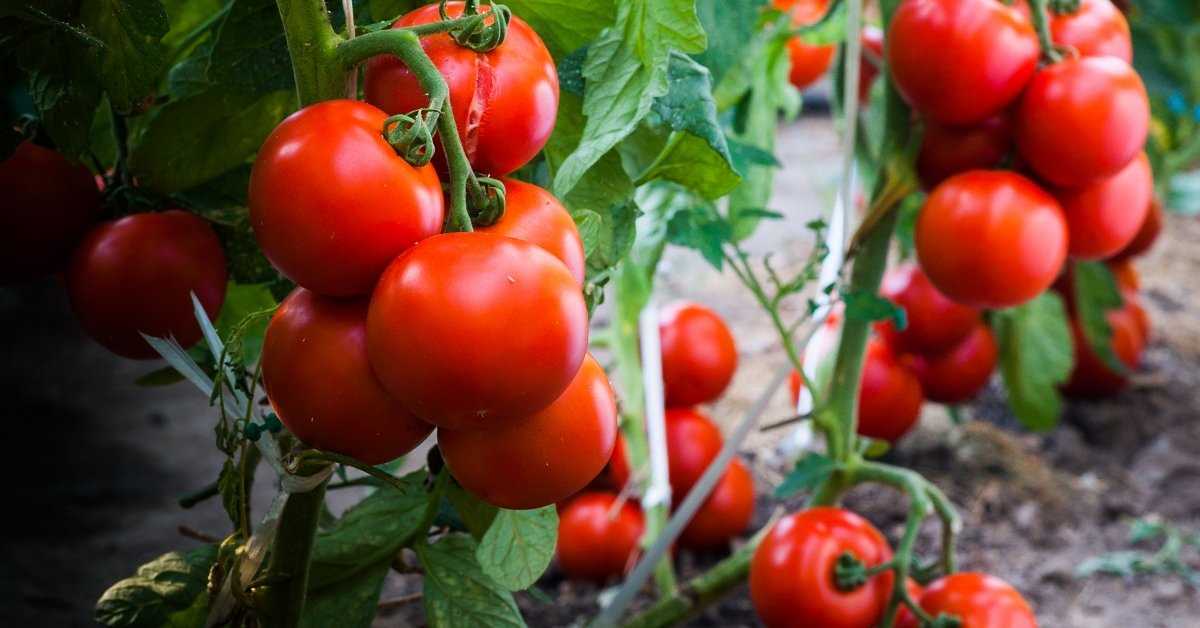
Китайская роза – один из наиболее уникальных и экзотических видов томатов, представленных в обзоре лучших сортов сезона! В отличие от других сортов, у этой растения высокое содержание ликопина – вещества, который способствует поддержанию здоровья сердца и снижению риска онкологических заболеваний.
Но не только полезные свойства делают китайскую розу таким интересным сортом. Ее особенность – в нежной текстуре плодов и их необычном вкусе. Они отличаются от остальных сортов своей мякотью, похожей на розовые лепестки. Вкус китайской розы – сладкий с легкой кислинкой, что делает этот сорт идеальным для приготовления десертов и салатов.
Китайская роза также выгодно отличается по внешнему виду. Ее плоды имеют гладкую и блестящую поверхность, а их форма может варьироваться от округлой до слегка вытянутой. Экзотический вид этого сорта томатов не оставит равнодушным ни одного ценителя оригинальных и неповторимых продуктов.
Золотой дождь: яркий и сочный, привлекает взгляды
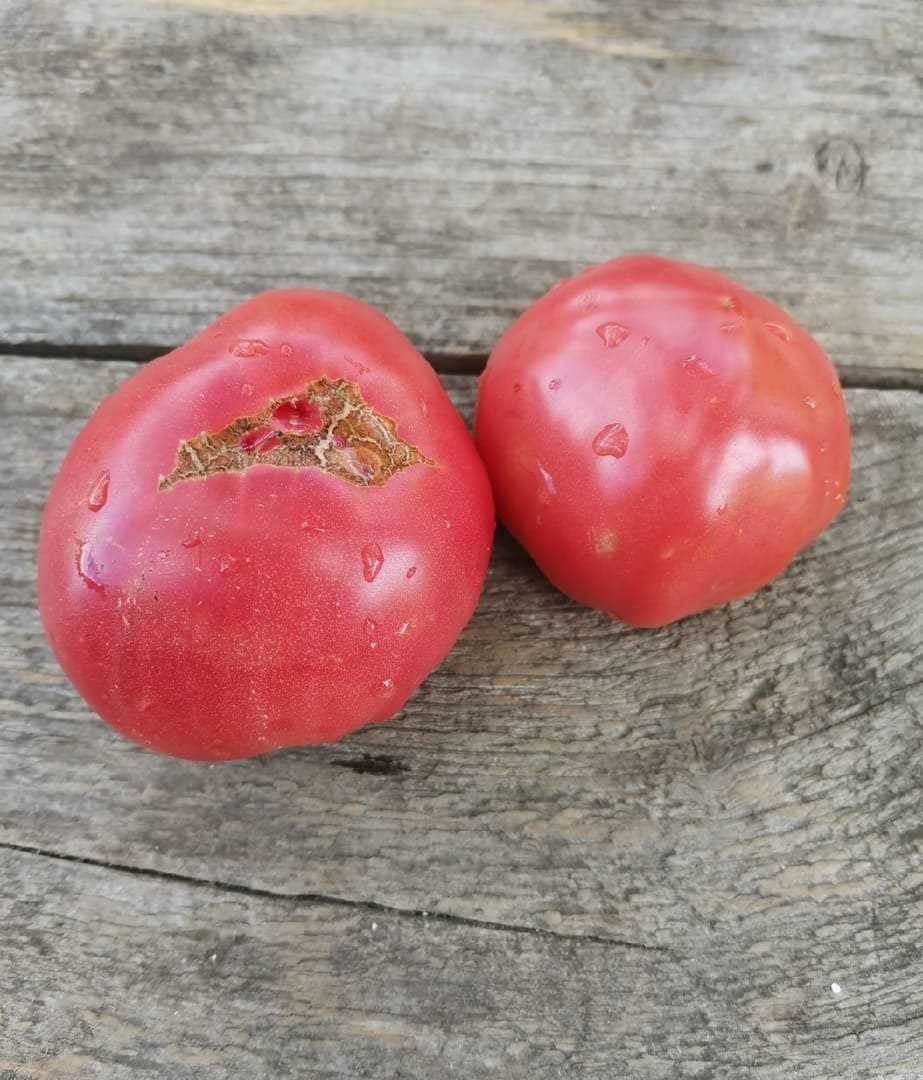
Один из лидеров сезона – сорт томата «Золотой дождь». Этот сорт выделяется своей яркой и сочной окраской, которая привлекает взгляды всех любителей томатов. Характерной особенностью этого сорта является его высокая урожайность и прекрасный вкус.
Томаты «Золотой дождь» обладают сладким вкусом и сочной мякотью, что делает их идеальным выбором для приготовления салатов и соусов. Кроме того, они отлично сочетаются с другими овощами и зеленью, что позволяет создавать разнообразные и вкусные блюда.
Так стоп!!! Вы всё ещё не подписаны на наши каналы в Телеграмм и Дзен? Посмотрите: ТГ - (@historyfantasydetectivechat) и Дзен (https://dzen.ru/myshortsstorys)
Этот сорт томата также отличается своей устойчивостью к различным заболеваниям и вредителям, что обеспечивает высокую урожайность и удобство в выращивании. Таким образом, «Золотой дождь» становится одним из самых популярных сортов томатов для домашнего садоводства и профессионального выращивания.
Розовое чудо: нежные оттенки и неповторимый вкус
Среди 14 лидеров сезона сортов томата особое место занимают томаты с нежными розовыми оттенками. Их неповторимый вкус и аромат завораживают и покоряют сердца настоящих гурманов.
Одним из самых популярных сортов в этой категории является «Розовый гигант». Этот томат поражает своими размерами и весом – он может достигать 500 граммов. Вкус этого сорта настолько насыщенный и сладкий, что просто тает во рту.
Еще одним замечательным представителем розовых томатов является сорт «Дама в розовом». Его красивые плоды имеют нежный розовый цвет и прекрасно подходят для приготовления разнообразных блюд. Вкус этого сорта – настоящее открытие для истинных ценителей.
Томаты с розовыми оттенками – настоящее чудо природы. Они радуют глаз своей красотой и радуют вкусовые рецепторы своим неповторимым вкусом. Попробуйте эти удивительные сорта томатов и насладитесь их нежностью и изысканным вкусом.
Черный принц: элегантная черная кожица и сладкий мякоть

Один из самых захватывающих и необычных сортов томатов сезона – Черный принц. Он поражает своей элегантной черной кожицей и сладким вкусом мякоти.
Томат Черный принц относится к группе индетерминантных сортов, что означает, что он растет в виде небольших кустиков и дает урожай в течение всего сезона. Растение Черный принц является среднерослым и достигает высоты около 150 сантиметров.
Одной из особенностей этого сорта является его кожица, которая имеет глубокий черный цвет. Этот черный оттенок придает томатам Черный принц необычайную элегантность и привлекательность. Кроме того, кожица очень тонкая и легко снимается с плода.
Мякоть томата Черный принц также имеет свои особенности. Она сладкая и сочная, с легким ароматом и нежным вкусом. Мякоть томата обладает хорошей плотностью, что делает его идеальным для приготовления различных блюд: от салатов до соусов и пасты.
Радуга вкусов: разнообразие цветов и оттенков вкуса

Лидеры сезона! Обзор сортов томата поражает своим разнообразием цветов и оттенков вкуса. От ярко-красных до ярко-желтых, от сливового до салатного, каждый сорт томата имеет свою уникальную окраску и неповторимый вкус.
Розовый гигант – один из самых популярных сортов томата среди садоводов. Его ярко-розовая окраска и сладкий, ароматный вкус делают его идеальным для приготовления разнообразных блюд: салатов, соусов, соков.
Золотой дождь, названный так из-за своей ярко-желтой окраски, обладает нежным фруктовым вкусом с легкой кислинкой. Он отлично подходит для приготовления свежих салатов и декорации блюд.
Черный принц – это сорт томата с необычной окраской. Его темно-пурпурные плоды имеют сладкий и насыщенный вкус с легкой кислинкой. Он идеально сочетается с мясными блюдами и сырами.
Сорта томатов представлены в разнообразных цветах: от ярко-красного до темно-фиолетового. Каждый из них имеет свою особенность и неповторимый вкус. Они станут отличным украшением вашего сада и настоящим угощением для ваших гостей.
Зеленый гигант: освежающий и ароматный, идеально в салатах

Один из настоящих лидеров сезона – зеленый гигант. Этот томат поражает своим размером и ярким зеленым цветом. Но несмотря на свою необычность, он обладает неповторимым вкусом и ароматом.
Зеленый гигант идеально подходит для приготовления салатов. Его сочная мякоть и освежающий вкус прекрасно сочетаются с другими овощами и зеленью. Этот сорт томата добавит яркости и оригинальности любому салату.
Необычные формы и размеры зеленого гиганта привлекают внимание на столе. С этим томатом вы сможете удивить и порадовать своих гостей. А его нежная текстура и аромат превратят обычный салат в настоящий шедевр кулинарии.
Малиновое чудо: насыщенный вкус и великолепный аромат
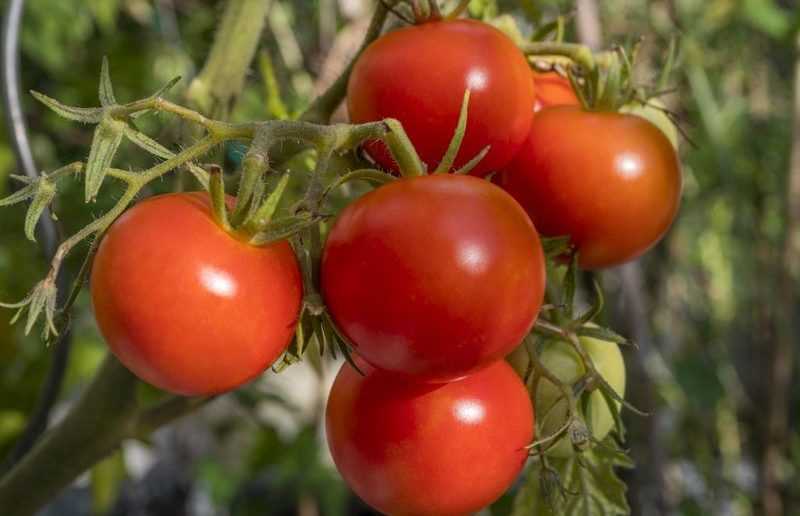
В обзоре лучших сортов томата сезона! мы не можем обойти вниманием лидера – сорт Малиновое чудо. Этот сорт томата поражает своим насыщенным вкусом и великолепным ароматом, который позволяет насладиться каждым кусочком.
Малиновое чудо – один из самых популярных сортов томата на российском рынке. Он отличается высокой урожайностью и прекрасно адаптируется к различным климатическим условиям. Сорт имеет среднеспелость, что позволяет наслаждаться вкусными и сочными томатами уже в середине лета.
Одним из особых достоинств Малинового чуда является его устойчивость к болезням и вредителям. Это делает его прекрасным выбором для тех, кто хочет получить урожай без использования химических препаратов.
Кроме того, Малиновое чудо отличается отличным внешним видом – крупные плоды имеют яркую малиновую окраску и прекрасно дополняют любое блюдо. Они отлично подходят для приготовления соусов, салатов и консервации.
Оранжевая сказка: необычный цвет и сладкий вкус
Оранжевые томаты — настоящая находка для ценителей необычных сортов. Их яркий и сочный цвет напоминает о летнем солнце и добавляет яркости на тарелке. Благодаря особому пигменту — лицопину — оранжевые томаты обладают более высокой питательной ценностью и антиоксидантными свойствами.
Одним из лидеров сезона среди оранжевых томатов является сорт «Оранжевая сказка». Этот томат отличается не только своим ярким цветом, но и сладким и нежным вкусом. Он идеально подходит для приготовления свежих салатов и гарниров. Сочность и аромат этого томата просто завораживают!
Томат «Оранжевая сказка» отличается от других сортов не только внешними характеристиками, но и своими полезными свойствами. Богатый состав витаминов и минералов делает его незаменимым продуктом для поддержания иммунитета и укрепления здоровья. Полезные вещества, содержащиеся в этом томате, помогают предотвратить различные заболевания и улучшить работу организма в целом.
Если вы хотите добавить в свою диету что-то особенное, то томат «Оранжевая сказка» – идеальный выбор. Он порадует вас своим необычным вкусом и придаст блюду яркости и оригинальности. Попробуйте этот сорт и убедитесь сами – оранжевая сказка может стать настоящим открытием для вас!
Вопрос-ответ:
Как выбрать лучший сорт томата для выращивания?
При выборе сорта томата для выращивания стоит обратить внимание на несколько факторов: климатические условия вашего региона, предпочтения вкуса, размеры плодов, устойчивость к болезням и вредителям. Помимо этого, также стоит учитывать ваши навыки и опыт в садоводстве.
Какие сорта томатов самые урожайные?
Среди самых урожайных сортов томатов можно выделить «Медвежье ухо», «Черри», «Сибирский сад», «Трюфельный розовый» и «Киви». Они отличаются высокой плодоносностью и хорошей устойчивостью к неблагоприятным погодным условиям.
Какие сорта томатов лучше всего подходят для консервирования?
Для консервирования лучше всего подходят сорта томатов с плотной мякотью и малым количеством семян. Некоторые из таких сортов включают «Сан Марцано», «Амурский тигр», «Акула» и «Октябрьский сюрприз». Они сохраняют свою форму и вкус при переработке.
Какие сорта томатов лучше всего подходят для выращивания в теплице?
Для выращивания в теплице рекомендуется выбирать сорта томатов, которые хорошо переносят высокую влажность и тепло. К таким сортам относятся «Тепличный гигант», «Алиен», «Арлик» и «Красный жемчуг». Они обладают хорошей устойчивостью к заболеваниям и дают высокий урожай в закрытом грунте.
Какие сорта томатов самые вкусные?
Вкус варьируется в зависимости от предпочтений каждого человека, однако некоторые сорта томатов считаются особенно вкусными. Среди них можно выделить «Черри», «Малиновка», «Черный принц», «Ананасный», «Ароматный», «Бычье сердце» и «Желтая дюжина». Эти сорта отличаются насыщенным ароматом и сладким вкусом.


